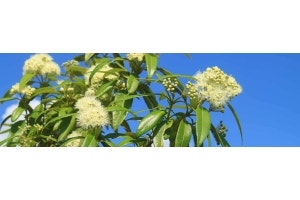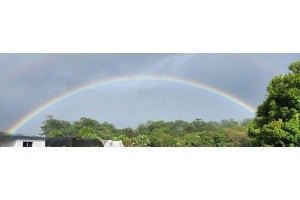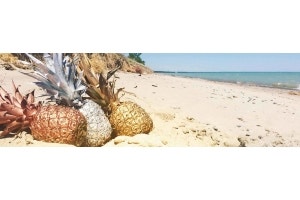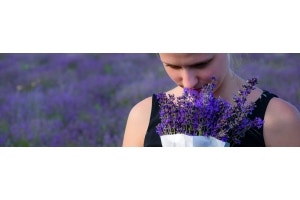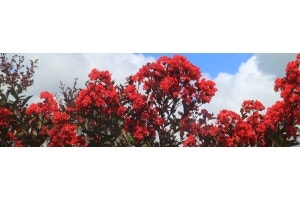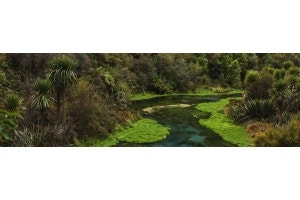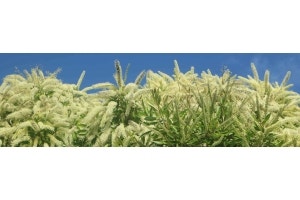
Augusta Masters - Much More Than Golf
The Masters Tournament at Augusta National, Georgia, USA, is one of the four men's major golf championships in professional golf, and takes place in early April. As well as amazing golf, the Masters is also known for its breathtaking course, planted with colourful shrubs in perfect condition.Let's take a look!
 The US Masters must be the only major golf tournament that non-golf fans are familiar with - and it's not because of the challenging greens, or the challenging social history that clouds the club...
The US Masters must be the only major golf tournament that non-golf fans are familiar with - and it's not because of the challenging greens, or the challenging social history that clouds the club...
There's around 350 different plant species along the course, with over 80,000 individual plants. (That's where our tubestock scores big - no holes to dig!) Most of them are chosen to create a spectacular spring display - as April falls in that season in the northern hemisphere.

Whether it's lush green swards to emulate a fairway, vibrant mixed shrubberies in rolling mounds, or even the rugged grassy dunes of a tough links course, there's something you can plant in your back yard. Even a little pot of no-mow grass!
 We can thank the August National course designer for the landscaping - he was English surgeon and keen golfer Dr. Alister MacKenzie; ably assisted by a descendant of the original tree nursery owner, Louis Alphonse Berckmans.
We can thank the August National course designer for the landscaping - he was English surgeon and keen golfer Dr. Alister MacKenzie; ably assisted by a descendant of the original tree nursery owner, Louis Alphonse Berckmans.
As for the impeccable groundskeeping - the grass is mowed every day, and sometimes twice a day for faster greens. The shrubs require a lot less maintenance!If you love a lush green lawn look and don't fancy putting in those kinds of hours, we have a selection of lawn-alternative plants that only need a monthly or even quarterly tidy up.
Plant The Masters In Your Back Garden
Let's take a look at some of the key plants that create the course's iconic spring glamour.
Hole 13 : Azalea
THE quintessential plant associated with Augusta Masters is azalea - and no wonder with around 1600 individual plants of over 30 varieties of azalea planted on the course. The main flowering season is spring, but many azaleas - especially the Encore range - will flower again in autumn, giving you twice the blooms for your buck. Azaleas love an acid soil and regular water - for full growing tips read our post Which Azalea Is Best For You. We have over 50 varieties of azalea for you to choose from throughout the year. That's better than Augusta! We can't ship azalea to SA because of state biosecurity laws (we don't make those, the individual states do). So we made a post to help you find azalea alternatives if you live in SA.
Hole 5 : Magnolia
A long shady avenue of venerable Magnolia grandiflora trees lines the entrance to the club, creating a glamorous approach for golfers to walk through - and this evergreen plant makes an impressive entrance wherever it is planted. It's also a beautiful solo feature plant if you don't quite have the length of driveway to do it justice! In a frost-free garden it will flower almost all year round, with huge white flowers abuzz with beneficial pollinators. When it's not in flower, the glossy deep green-bronze leaves backed with velvety tan, make is a very handsome shrub.
Hole 10 : Camellia
The camellias at Augusta are the more cold-tolerant japonica camellias, and the humid warm-climate sasanqua camellias. Japonica tend to be a little later flowering on our Sunshine Coast nursery so whatever the weather in winter and spring there'll be something in bud or bloom.These camellias are evergreen, so they'll look good all year round. Hole 10 is traditionally the most difficult to play - happily camellias are not difficult to grow providing you give them a sheltered spot and rich neutral to acid pH soil. Give them an extra watering in dry summers too, to help them produce more of those winter buds.
Hole 1 : Tea Olive - Osmanthus
Osmanthus, tea olive (or should that be tee olive, on a golf course?), is a handsome evergreen woody shrub with dark glossy leaves. It makes excellent dense hedging, and when it's in flower - oh, that fragrance! You can catch the scent on the breeze wherever you are. We think it smells deliciously like peach yogurt - but you judge for yourself. The creamy-white clusters of flowers are small and tucked away between the branches, so if your preference is for all all-green garden it will blend in beautifully. Osmanathus fragrans has the stronger perfume, as its name suggests; the resilient hybrid burkwoodii is more cold hardy; and the very flowery Heaven Sent is the cold-hardiest of all - so choose according to your garden's climate!
Hole 6 : Juniper
Tall-growing Spartan and Skyrocket are the junipers you'll find at hole 6. We stock groundcover junipers too, for layered looks in garden borders.Whether you plant tall elegant trees, or dense bushy groundcovers, evergreen junipers add a sense of permanence to your garden. Like all conifers, they are very easy-going, and keep their piney-scented foliage all year round - silver, blue-green, and gold. Just remember to water well in dry spells.
Hole 12 : Golden Bell - Forsythia
This showy eyecatching shrub often blooms before anything else in the garden - and often on bare branches too, to give you a better look at those sunny yellow blossoms. Depending on where you live, that's any time from midwinter, when little else is in bloom, into mid spring.Once the forsythia blossoms fade, the tree sports lime green leaves and makes an unobtrusive backdrop to showy summer shrubs.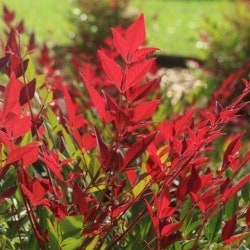
Hole 17 : Nandina
Nandina, or sacred bamboo, is a ripper shrub for year-round colour, easy-care hedging, or even feature planting. We've got spicy shades from Obsession's deep burgundy to Moonbay's zesty citrus, that keep their colour all year, or change with the seasons. Several of the Ozbreed varieties are sterile too, so if your garden is more bushland than fairway, you can plant with confidence.
 We hope this has inspired you to add a new plant or two to your garden, in honour of the Augusta Masters course.
We hope this has inspired you to add a new plant or two to your garden, in honour of the Augusta Masters course.
























